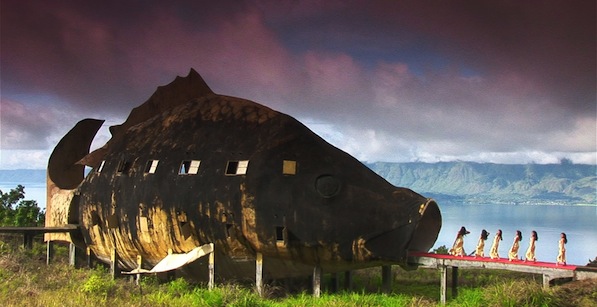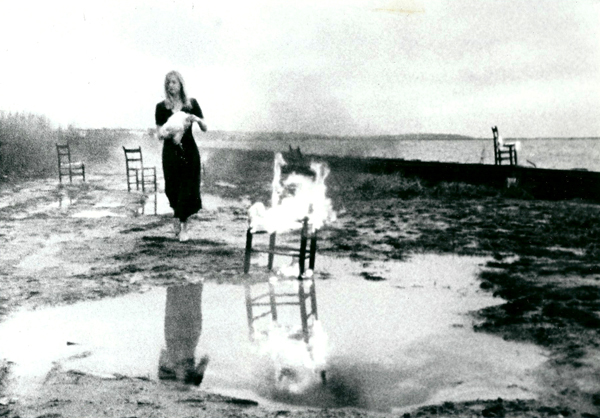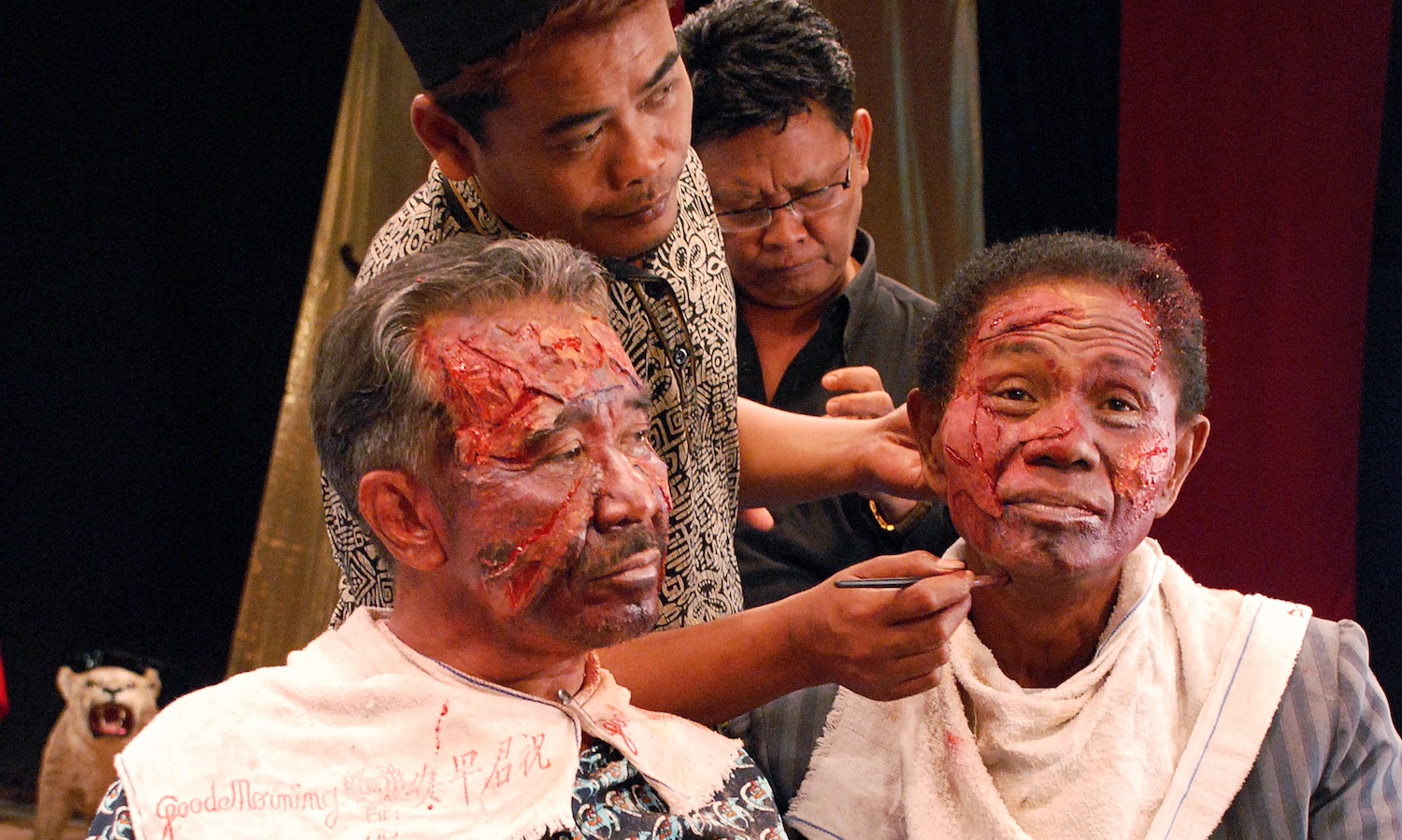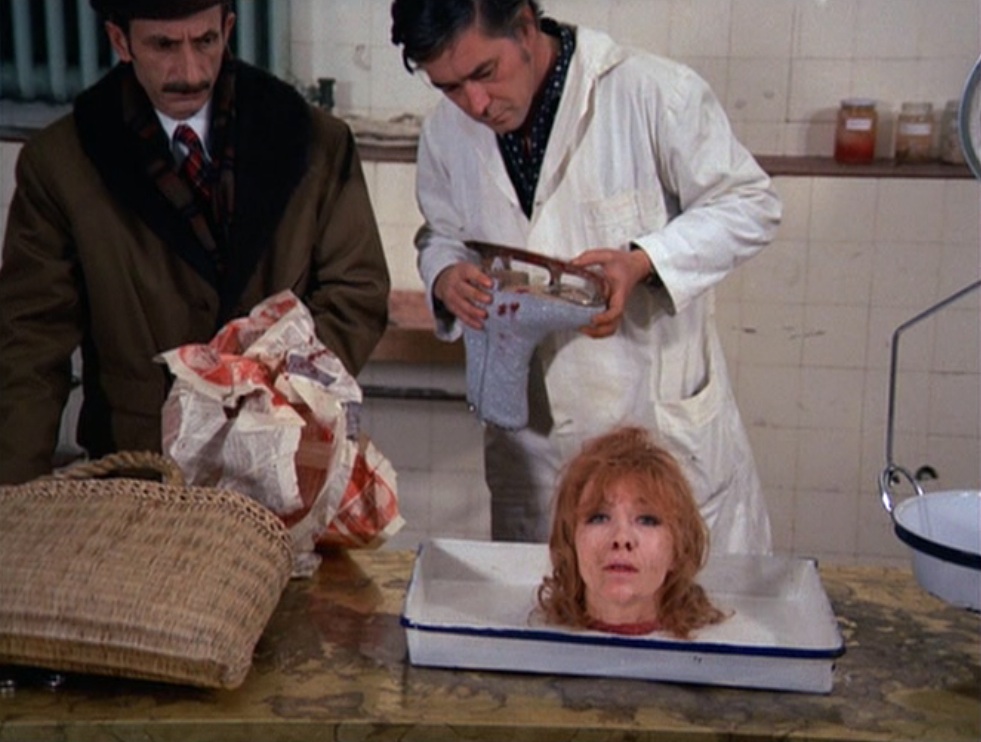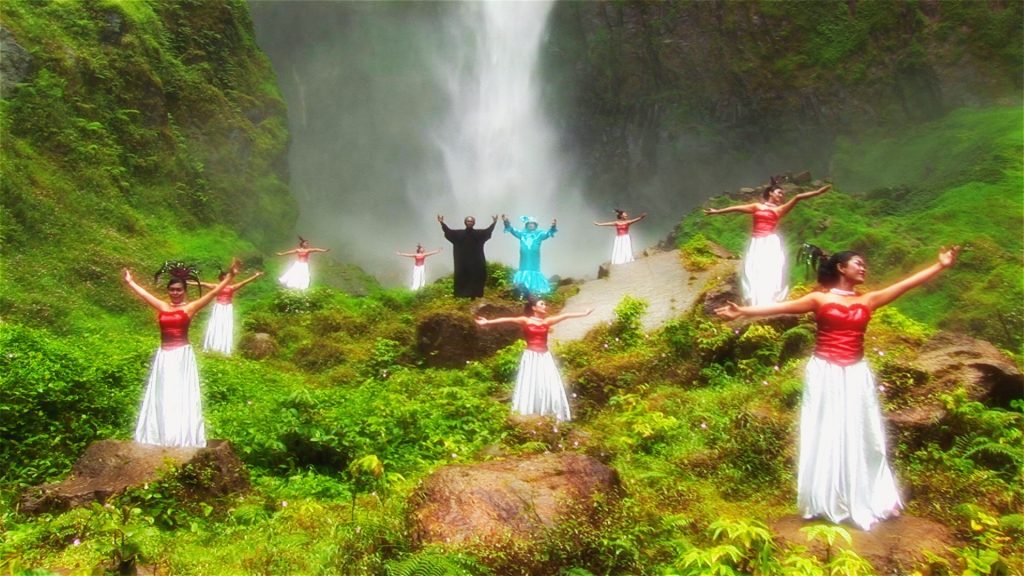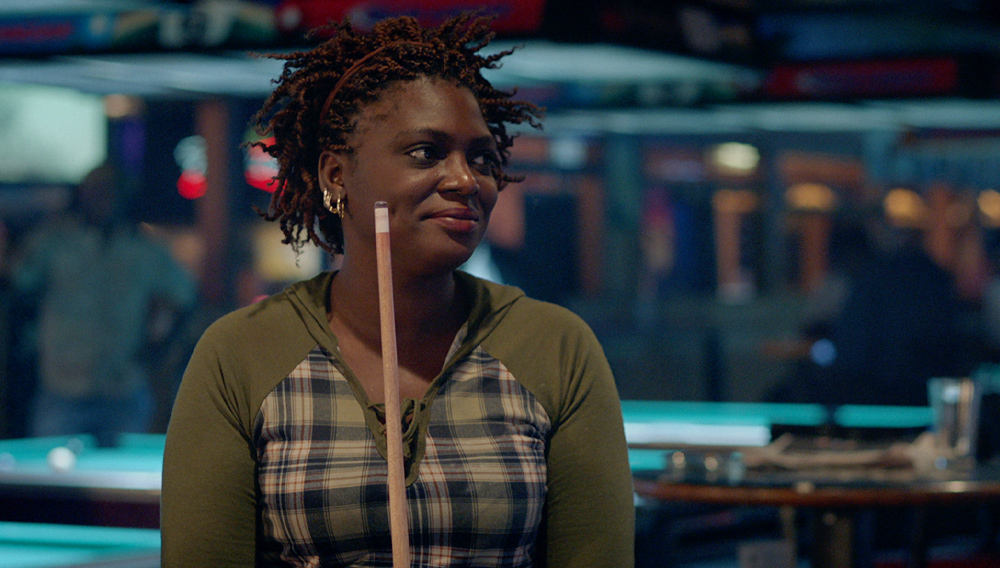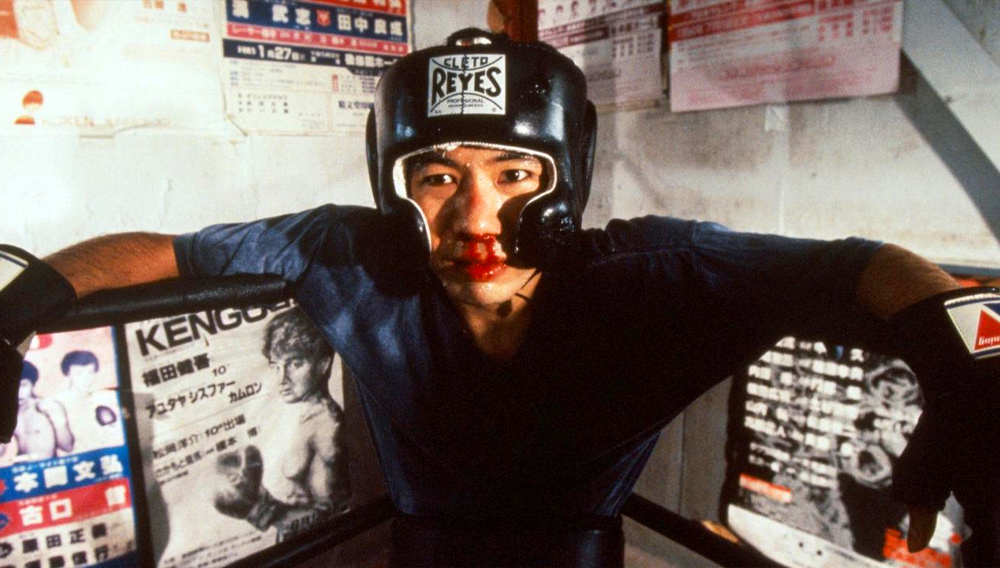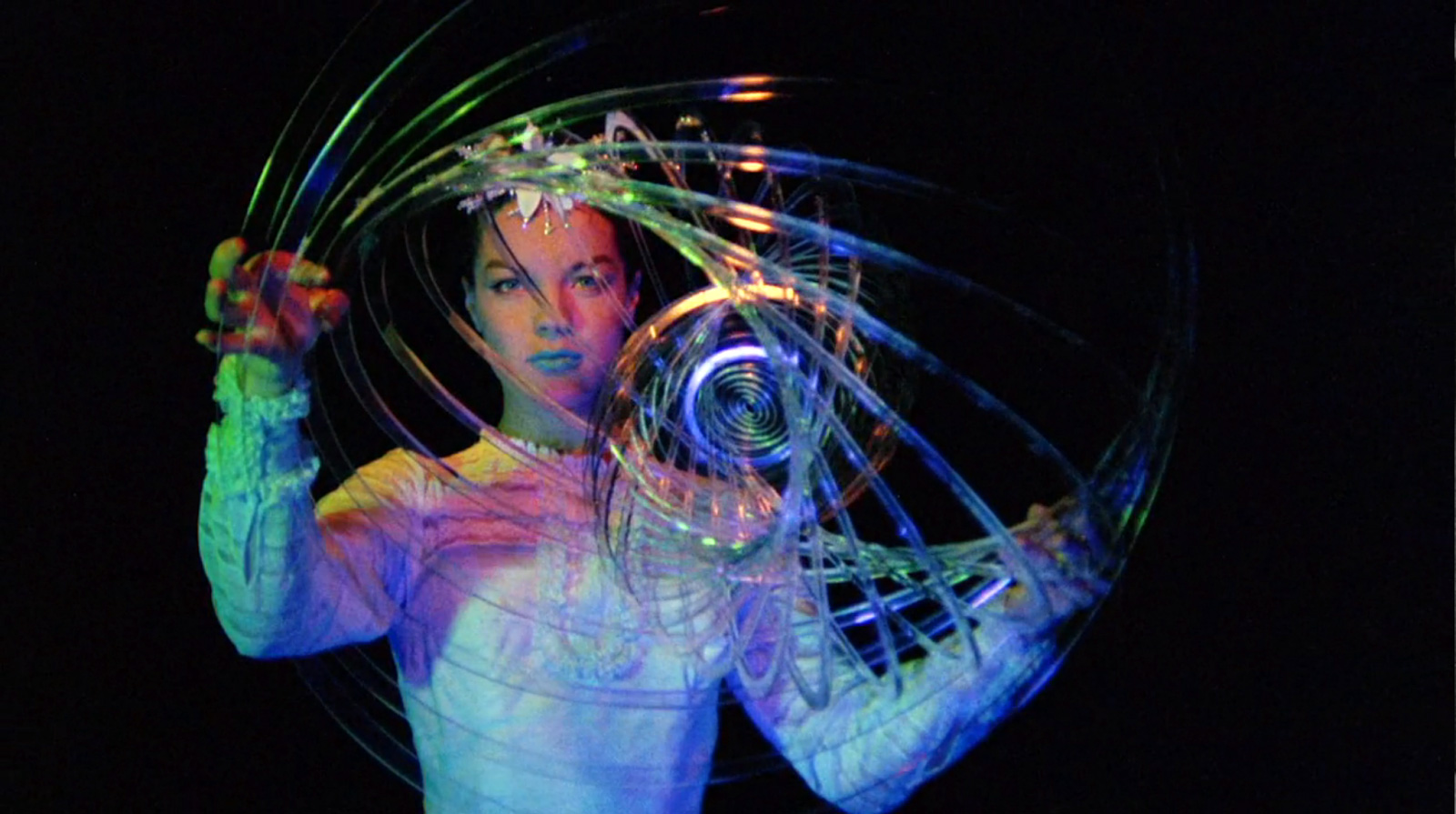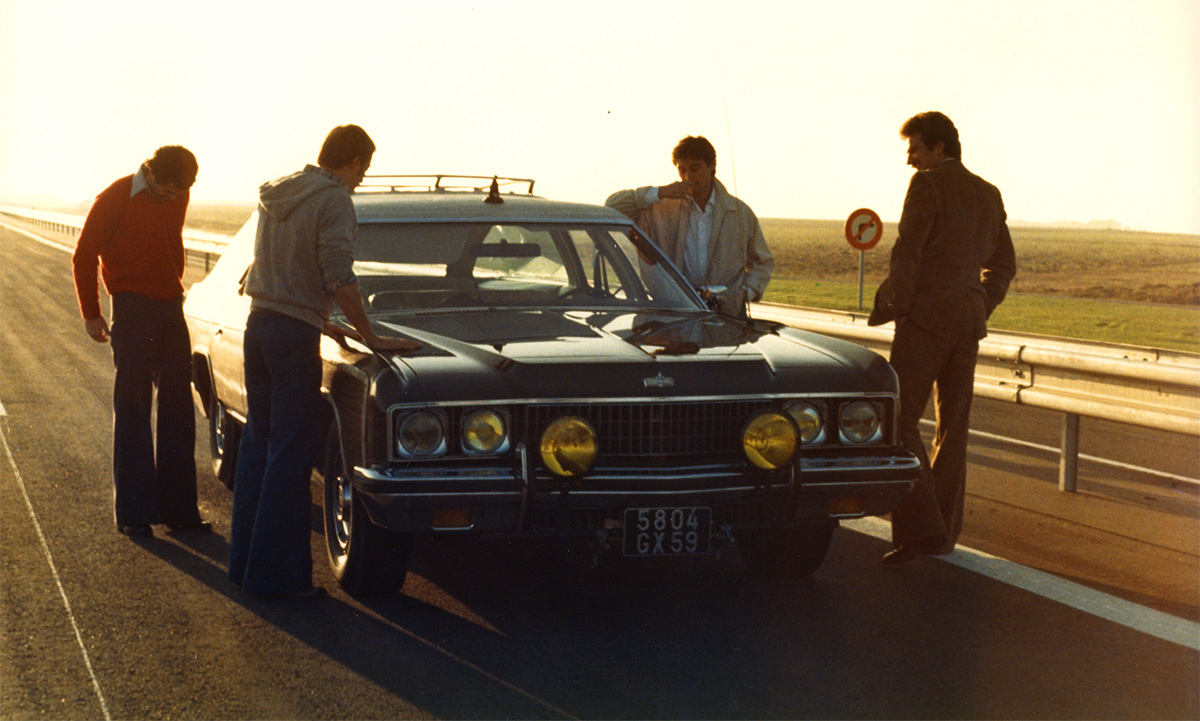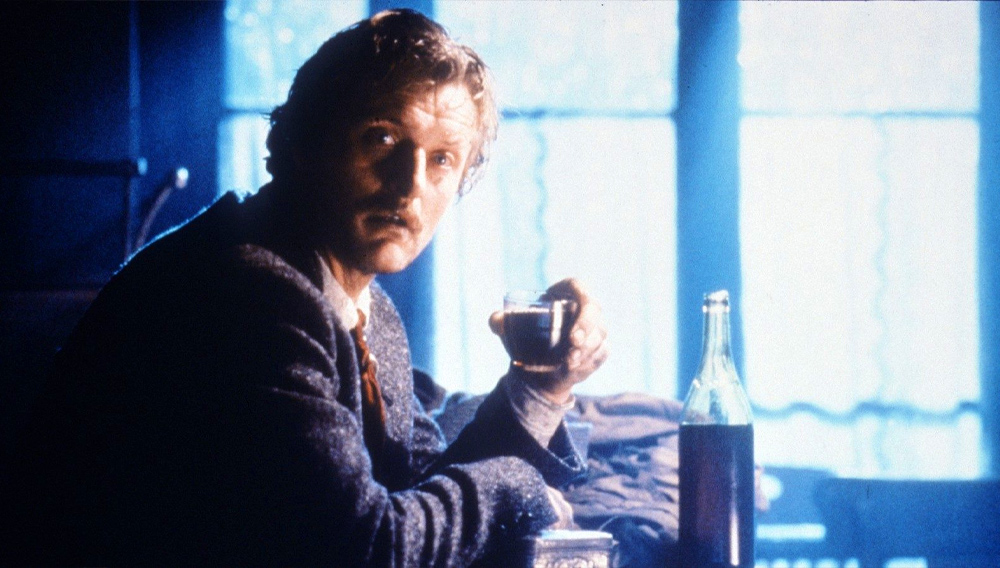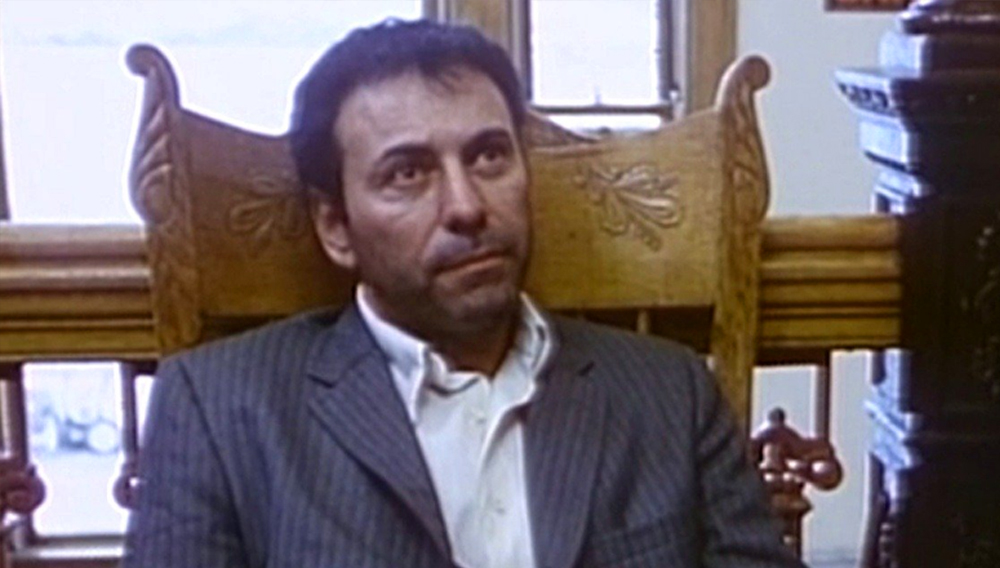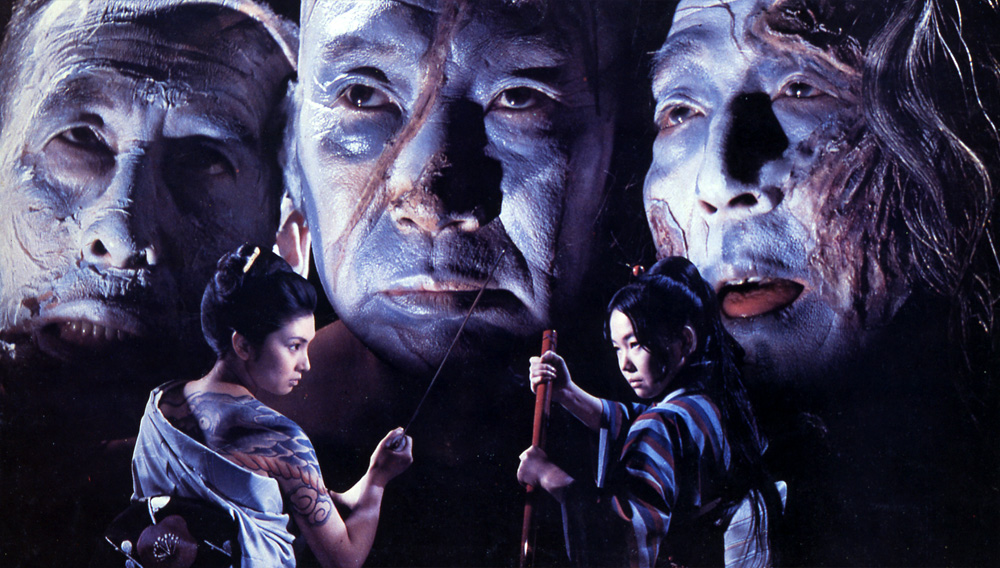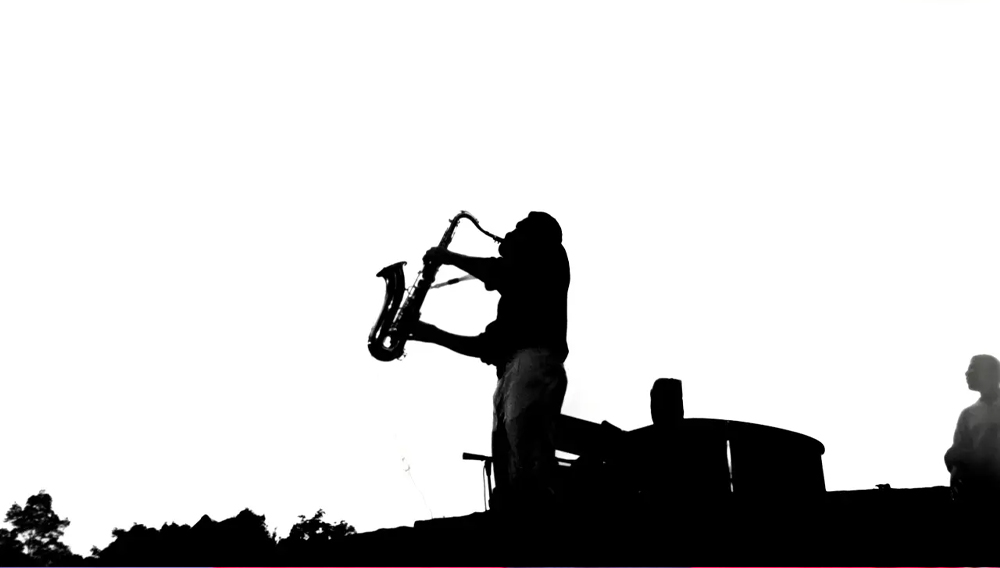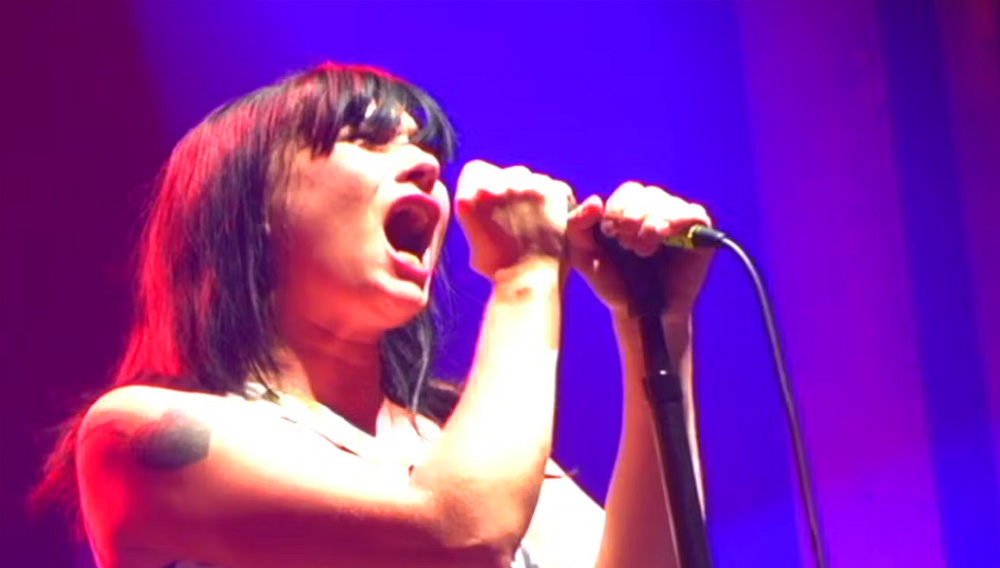If there is one film that demands to be seen (and to be seen with an audience) this year, The Act of Killing is it. Werner Herzog has said, “I have not seen a film as powerful, surreal and frightening in at least a decade…” Errol Morris has called it an “amazing and impressive film.” Both Herzog and Morris, extraordinary filmmakers in their own right, backed up their praise by becoming Executive Producers of the film, a gesture which has resulted in increased attention for an unconventional documentary about an unpleasant topic. It is a story that is complicated by the enthusiastic recreations of horrific events by the perpetrators, filmed in a community still inculcated by fear where the survivors and the families of the victims are unable to speak freely about what occurred. The Act of Killing is not merely one of the great documentaries of the past ten years. It is one of the most devastating and impressive documentaries ever made.
Jonathan Marlow: When we met in Telluride, I hadn’t realized that you had attended the festival before. I haven’t had the pleasure of seeing The Entire History of the Louisiana Purchase. What was your experience of presenting that film at the Telluride Film Festival in 1997 or, rather, in which ways was it different that first time compared to attending last September with The Act of Killing?
Joshua Oppenheimer: Those are challenging films in that they’re both painful and shocking. But that was not a feature film. It was a fifty-minute film, my thesis film from college. It was programmed with other shorter films and those films at Telluride get much, much less attention, inevitably. So it was a very calm experience and an opportunity to watch a lot of films. I had hardly any time to watch films in Telluride this time. I think I saw a couple. Only a couple. Very few.
Marlow: Not surprising.
Oppenheimer: [The screening of The Entire History of the Louisiana Purchase] was a long time ago. Certainly, there wasn’t the enormous attention on my work the way there was this time. I remember it as also magical in the way that Telluride is.
Marlow: I know when I saw the film at Telluride and again when it played in Toronto, there was this overwhelming embrace of the documentary but there was also this thought of how difficult it would be to distribute a film that would be perceived as a bit bleak, of course. I was very delighted that Drafthouse Films was selected as the distributor. It seems like Drafthouse would be a perfect distribution partner.
Oppenheimer: It’s so nice. They’ve been so supportive. They wrote us. We were actually choosing between a few different distributors. They weren’t the only ones interested…
Marlow: No, of course not.
Oppenheimer: They wrote us a letter that made it clear that they would be deeply passionate about this. I think that is what it needs. I think it needs somebody that feels the importance of the film and is really moved by it. I’ve been very lucky that everyone who has worked on it—everybody distributing the film and trying to sell the film and produce the film– is really very passionate about it. I think that Drafthouse, though, is small enough that the individual people there can really come to know you. They can come to know you and see how best to make use of you. They don’t have a standard approach that they do with every title. They’ve been wonderful.
Marlow: That seems rather obvious in the films that they’ve licensed thus far. They seem able to give it a level of attention that, presumably, a larger company may not be similarly committed to giving.
Oppenheimer: That’s what it feels like.
Marlow: What initially took you to Indonesia? I know that you were there quite some time before you started this project.
Oppenheimer: At screenings, I explain that I started working with survivors. But, of course, that is not what initially took me there. When I first went to Indonesia, I knew nothing about the genocide at all. I knew nothing really about Indonesia at all. I was not sure I knew the difference between Indonesia and Malaysia. I was trying to get out of doing fiction. I was writing scripts. Nothing was getting made and I realized that if something were to be made, I wasn’t going to necessarily enjoy the process of making it.
I come from a place as a filmmaker where, like my mentor Dušan Makavejev, I was interested from the very beginning in using film as a way of making things that are invisible in the world visible. Not in the sense of simply investigating things that are unknown but using film as a catalyst for intervening in reality. Again, I don’t just mean a passive intervention. I was experimenting while in this endless development holding pattern for the screenplay I had written with my then-collaborator Christine Cynn. I was experimenting with methods of participatory documentary making, which you’ve seen the combination of (at least for the first stage of my explanation of this) in The Act of Killing. I was asked by a friend if we were interested in making a film with workers struggling to organize a union in a place where unions had previously been illegal and where there was very bad exploitation. It actually could have been anywhere that we were sent. We could have been sent to Colombia or to Malaysia or to India. For some reason, we were sent to Indonesia. I found myself not knowing much about Indonesia in a pretty remote village in the plantation delta outside of Madiun, where I made The Act of Killing, trying to collaborate with plantation workers who were trying to organize a union and to confront overwhelmingly bad conditions, despite difficult obstacles. The biggest obstacle they faced was fear. The fear came from the fact that in 1960s they were a British colony. Many had been accused of being leftists and had been put in jail or put in concentration camps. Some were killed. They were afraid it could happen to them again if they really got serious about organizing a union. That was really my first encounter with the 1965 genocide. Suddenly I found this mass killing. I learned about the mass killings for the first time and understood it was a really important part of the story of this community. From there, we developed efforts to work with them to try and tell the story about what had happened using forms of Javanese village opera that had been banned under Suharto, the practitioners of which had been thrown into concentration camps and killed. Trying to resurrect those forms freed the political prisoners to tell the story of what had happened. Then these old men and women would get together to play the gamelan for the first time in forty years. The moment they start playing, the neighbors would hear the noise and would report it to the police or to the military. Then we would get harassed and the film shoot was shut down. It was frightening because the survivors of the genocide have been under political surveillance. They’ve been under surveillance and discriminated [against] since 1965. The relatives of the victims are not allowed to marry whom they wish. They weren’t allowed to go to higher education.
This is all slowly changing. But in the rural areas, the past hasn’t changed at all. They were extorted weekly by the village authorities. They were made to do forced labor for the army. They were denied access to most jobs. It was really a system of political apartheid where the victims of the genocide and their relatives were lumped into this underclass. It was frightening for them to work on a film that would lead them to break the silence about what was happening to them. We tried to get support from the broader Indonesian human rights community and everyone was very, very supportive. But they said, ‘You know, there’s not going to be a way to do this faithfully—at least in this community—because they’re under too much pressure from the military.’
Then, one of the women had an idea. She said, ‘Josh, if you want to do this faithfully, you should film the terrorists. They’re all around you. That’s one of the reasons we’re so afraid. They live all around us. They will be proud and they will boast. And if you simply film the way they act proud—or they will seem to be proud—if you film the way they act proud and they boast, you will see why we are so afraid. You will see killers who seem totally unrepentant, at least on the surface.’ She said, ‘Start with the next‑door neighbor. That’s the person who killed my aunt.’ Starting there, I found men who had killed dozens—even hundreds—of people. Each would show off about what they did rather than testify soberly about it. They wanted to take me to the places where they killed and wanted to show me how they did it. After a simple reenactment, they would lament that they hadn’t brought props along as weapons or friends along to play victims.
From there, I filmed every perpetrator I could find. I felt like this was a story of historical importance. Tens of thousands—maybe hundreds of thousands—of people had been killed in this one area and no one had ever documented what happened in Sumatra. These men were getting old and, as they would die, their stories would disappear. I filmed every perpetrator I could find and worked my way up the chain-of-command until I met Anwar and the men in Medan. Anwar was the forty‑first perpetrator I filmed. I continued, in fact, until I filmed army generals in Jakarta, who are not in the film. Even some retired CIA officers in the U.S.
Marlow: At what point did you decide to remove these latter elements from the film? Was it a distraction from the principal focus?
Oppenheimer: It relates to the other thing that kept me going and made me obsessive about doing a film about the perpetrators. Yes, I was finding out about them. But there was this enormous story that was unfolding right in front of my camera. It is about what is happening now. There is a regime of impunity founded on the celebration of genocide. It is a regime of corruption and of violence that’s still in place now. The questions that were most immediately prominent as I was filming these men who boast about killing people was, ‘How do these men see me? How do they think I see them? How do they want to be seen by the rest of the world?’ Ultimately, I guess, how do they see themselves? The method developed organically, as you see it in the film. I was realizing that if I simply were to let these men do what they were obviously inclined to do—to show me what they did, to reenact what they did, to dramatize what they did—I would be able to film that process and use those dramatizations and tell them that’s what I want to do and why. I would be able to get the answers to those questions, ‘How do these people want to be seen and how do they see themselves?’
Marlow: To what extent are you finding in the process of making this film—and, as you mentioned, this is the beginning of a larger process that you’re exploring—as a notion of the intersection between fiction and documentary? W.R. Mysteries of the Organism, a very beautiful and obvious example, allows something else to arrive out of a collision between narrative and reality. That’s quite different than what you’ve done but there is a relationship...
Oppenheimer: It’s less different than what I did in The Entire History of the Louisiana Purchase. That film is closer to Dušan’s work. Luckily, you’re speaking to me after having to screen The Act of Killing in Croatia. In Zagreb, everybody knew Dušan and loved Dušan so much that I had the opportunity to think about how this later manifestation of my experimentation with the intersection of fiction and documentary owes something to him and what the connections are. I guess I’d say a couple things. When you make a film—when you shoot anything—you create realities with people you film, around the filmmaking. If you shoot fiction, it’s obvious. You create fake moments—fictional moments—with actors and sets. You cut it together and you create the illusion of the continuous story. Something really strange happens in a film like W.R. where you intercut fiction scenes with documentary material and archive material. The meaning of the fiction scene is no longer derived from its position in a fictional narrative but starts to become something bigger, something allegorical. The allegorical includes political, moral and emotional forces derived from its relationship to these artifacts from the filmmaker’s encounter with reality. The final scene in W.R. where [spoiler] the Russian ice skater is singing self‑pityingly after cutting off the woman’s head with his ice skate while on the banks of the Danube. The injury is somehow no longer at all about him as a character feeling self‑pity. It’s about the history of fascism—the tragedy of the inevitable corruption of our efforts to mastermind utopian societies in the twentieth century—and the enormous, unthinkable violence that results from that. It just takes on this incredible force, because it means much, much, much more than what it would mean if it were to stand as a fiction film.
I think that something similar is at play in The Act of Killing in this way. It was very important to me the whole time that Anwar’s fiction scenes—and they are fiction scenes, collectively made—be as powerful as possible and be as close to what they would want as possible. Take the waterfall scene, for example: that the victims [spoiler] will come to him in heaven and thank him for killing them. That scene could easily be shot like a cheap karaoke video. It could have been edited like a cheap karaoke video. It is kitschy, undeniably. The characters are glowing. But it’s also majestic and takes your breath away, I hope.
Marlow: It does, indeed.
Oppenheimer: The fact that we gave their creations as much poetic force as possible allows a formal shift to take place. It is analogous to what occurs in W.R. or some of Dušan’s other work. What seems to be an observational documentary about a corrupt political regime—about killers who are showing us where they killed—transforms these stories into a fever dream where their fictional creations take over. They take over because they contain a kind of poetic force, a truth that is deeper, more profound and more relevant than what you’ve been getting up until that point in the more straightforward, observational material. What this method has allowed is to place Anwar and his friends—and the entire regime—through a prism. Where there was previously white light, you have this rainbow of colors, each of which is a different fantasy that the characters are telling themselves in order to create this dystopian, nightmarish reality. As these stories are made manifest through the method of letting these people dramatize themselves and are crystallized in the scenes that they create, the scenes are able to take over the film. They have a much deeper resonance than they would if they were scenes in a fiction film because they embody the fantasy and the nightmares that underpin an entire regime of terror. In the same way that, Dušan’s attempt at the end of W.R. is to articulate the sentiments that heighten the fantasy, the stories and the dreams of authoritarians.
Marlow: In a conventional documentary, having Anwar describe his lack of remorse is quite different from having him dramatize his thinking about these past actions. Specifically, in opening the film at the waterfall out of context and, by the end, when the sequence is presented in its entirety, the audience sees what is actually happening. This expression of imaginary gratitude from the victims tells you far more about what he’s thinking than if he were to describe it. You are taking the audience on an emotional journey. They’re not prepared to arrive until they’ve experience everything that comes between those two moments.
Oppenheimer: That’s exactly right. That was the idea. And then the idea is to create a false ending with the waterfall. That you think it’s the end and you think this can’t be the end because it’s the beginning. But it can’t be. It’s such an awful ending and then, suddenly, it’s not [spoiler] because he’s watching it and that is his pitiful real ending of it.
Marlow: Which adds another layer to the situation.
Oppenheimer: There’s just one other thing that is hugely important about the waterfall. I’m just starting to learn and understand it but I think there is this way in which Anwar’s reenactments are doing two things at once. In the waterfall scene, for example, Anwar is compensating for his own remorse or trauma. It is as though he feels traumatized or he feels remorse or he starts to sense the unimaginable as he starts to get a foreboding sense that what he has done is wrong. He compensates for it with the most grotesque celebration. There is a way in which the film and the material is a product of a tension between Anwar and me. Then, because I was working on behalf of survivors in a way and in collaboration, I think there is a way in which the film and the material is a product of a tension between me and Anwar. Because I was working on behalf of survivors, in a way, and in collaboration with survivors, I was looking for those moments where a celebration of genocide is a kind of allegory for or a distillation of the logic of this whole regime. When Indonesians see that scene, they cry because of where it comes in the film. But they also very often laugh joyfully while crying. They see finally, for once, the true nature of this regime being exposed. A mirror has been held up to the regime and it’s saying, ‘Look. We live in a society where we’ve killed a million people and they’re supposed to thank us for it.’ Of course, in a way, the dynamic that creates that scene and which comes up with this idea is actually, I think, is Anwar’s own premonition that what he did is horrible and that it needs to be compensated for or it needs to be denied through a kind of celebration. It is defensive. ‘I have to celebrate this because otherwise I have to admit that it was wrong and I’m not prepared to do that.’ I think that is part of why we tell stories about our violent past or the things we regret in life as individuals or the violence that underpins whole societies. It is part of why we tell stories to justify what we’ve done. I think the celebration of genocide in Indonesia—while it serves to keep people afraid and, therefore, is exploited by the people in power to enrich themselves—serves to make it possible for the people in power to continue to live with themselves.
Marlow: I could talk to you for another hour or more. But I do have a final question for you, however. To what extent is the chronology of what we see—outside of the waterfall, which we already discussed—of the reenactments follow the period of your actual filming?
Oppenheimer: It’s fairly close. Since you’ve seen it at Telluride, you’ve seen the shorter version of this film. There is a director’s cut of the film and it is the version that is in most festivals around the world apart from the U.S. That was where we were trying to launch a theatrical bid in preparation for an awards campaign in the fall.
Marlow: Which version will Drafthouse release?
Oppenheimer: They’ll release both. In non‑theatrical screenings and some cinematheques that ask for it, they’ll make the long version available.
Marlow: How much longer is that version?
Oppenheimer: Forty minutes longer. It has a different rhythm and it is a more immersive experience. It’s a more surreal experience. It’s the sort of transition into fever. Going back to the chronology, in the shorter version that you’ve seen in order to speed up the story, we had to take a piece of the film noir where Anwar goes under the table, starts to pull the wires as a call to prayer and he gets up? That happened later. That actually is part of the same time when he plays the victim. In the long version, it is not out of chronology. The cameos with the political leaders were done later because we were afraid that we were going to get in trouble shooting those and we figured that were going to be kicked out. We filmed with the three top leaders (apart from the deputy minister, who comes up to act in this film in the village massacre scene). The head of the paramilitary organization and the vice president were filmed later. But the very first scene I filmed with Anwar was where he is dancing on the roof and the very last scene I filmed with Anwar was when he’s dry‑heaving, choking…
Marlow: I wondered about that. It seemed as though—as a result of all the other reenactments—you took him back to that place. It is an amazingly powerful moment in the film.
Oppenheimer: I was aware that he had changed. Things had changed for him. And I was also aware that the previous time my crew was in there I didn’t know what had happened there. He just said, ‘Let me take you to the office where we work.’ I wanted to go back with him, knowing the place, and being able to actually take him to places that I knew were meaningful within that building. So I went back. I actually tried to get back in there for years and wasn’t able to get back in until the very last day of the shooting. They had changed owners of the shop. Suddenly, they said, ‘Sure, you can come back in.’ We’d been rejected again and again and again but I decided to check one more time. The very final day, they’d changed owners. They were setting up the new shop, in fact. You can see flowers on the table at the end. They’re the bouquet of flowers to celebrate the opening of the new shop.

